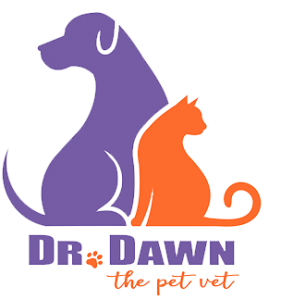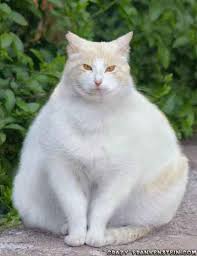 This blog was posted in 2015. It is as relevant now as it was then. Please share with friends and family.
This blog was posted in 2015. It is as relevant now as it was then. Please share with friends and family.
Animal obesity is a big problem in the US. It is estimated that 54% of dogs and cats are overweight. There are two main reasons: over-feeding and lack of exercise. Also, I find that often there is an inconsistent perception by pet parents, as to whether or not their pet is overweight. The entire household needs to be in agreement as to whether or not their dog or cat is carrying too much weight. Only then can you all be on the same page in decreasing the amount of food and increasing the amount of exercise.
A pet that is at a healthy weight will have:
- Ribs that are easily felt
- The stomach/abdomen does not visibly sag
- Waist is visible from above.
An “aerial” view of the patient will help determine if there is a waist. So often, dogs are mixed breeds, and have thick hair coats. It makes it hard to know the ideal weight. I always tell my clients to feel the rib area. If you cannot even feel the ribs through an excessively thick layer of fat, you need to cut back on calories.
Why is this important?
These are many of the common health risks associated with excess weight in pets:
- cancer
- diabetes
- kidney disease
- arthritis and decreased interest in exercise
- heart and respiratory disease
- decreased overall life expectancy
- high blood pressure
- ligament injury
I have seen patients previously on pain medications for arthritis, and diabetic cats, both no longer need medications as a result of their weight loss.
Tips to keep your pet in shape:
- Proper portions vary based on age, weight and activity level. Determine what you are really feeding, including snacks, and cut back. Once you know what you have been feeding, I typically recommend that you decrease the total amount 25%, and then have them weighed at 3 month intervals. The weight loss does not need to be excessively quick. If that does not work, there are prescription diets that limit calories, that can be tried.
- Choose pet food with meat or another protein as the first ingredient.
 3. Limit excessive treats. If you are giving treats, opt for small ones, or healthy options such as vegetables. Table scraps are calorie rich and may be too rich for your pet, and actually make them sick.
3. Limit excessive treats. If you are giving treats, opt for small ones, or healthy options such as vegetables. Table scraps are calorie rich and may be too rich for your pet, and actually make them sick.
4. Exercise daily. Start slowly if your pet is very overweight and not used to exercise. Gradually work up to more activity.
5. As always, consult your veterinarian to get a proper plan, or when in doubt
Dr. Dawn
Please share and subscribe here






